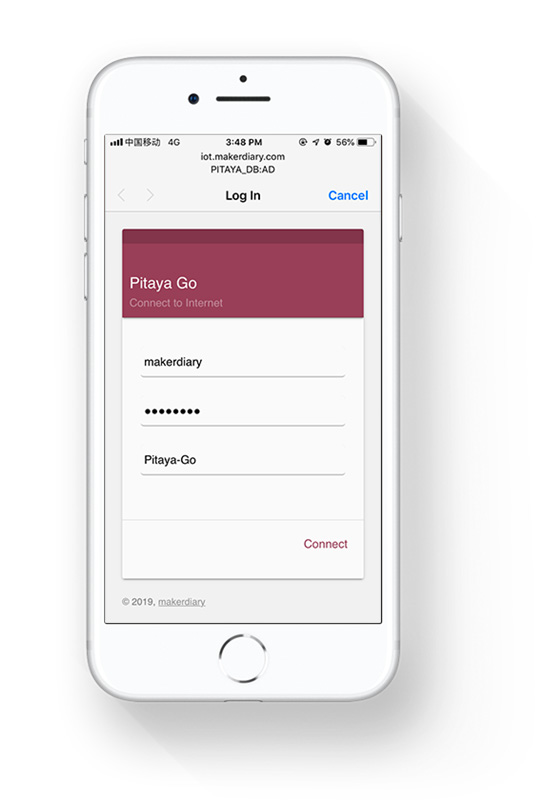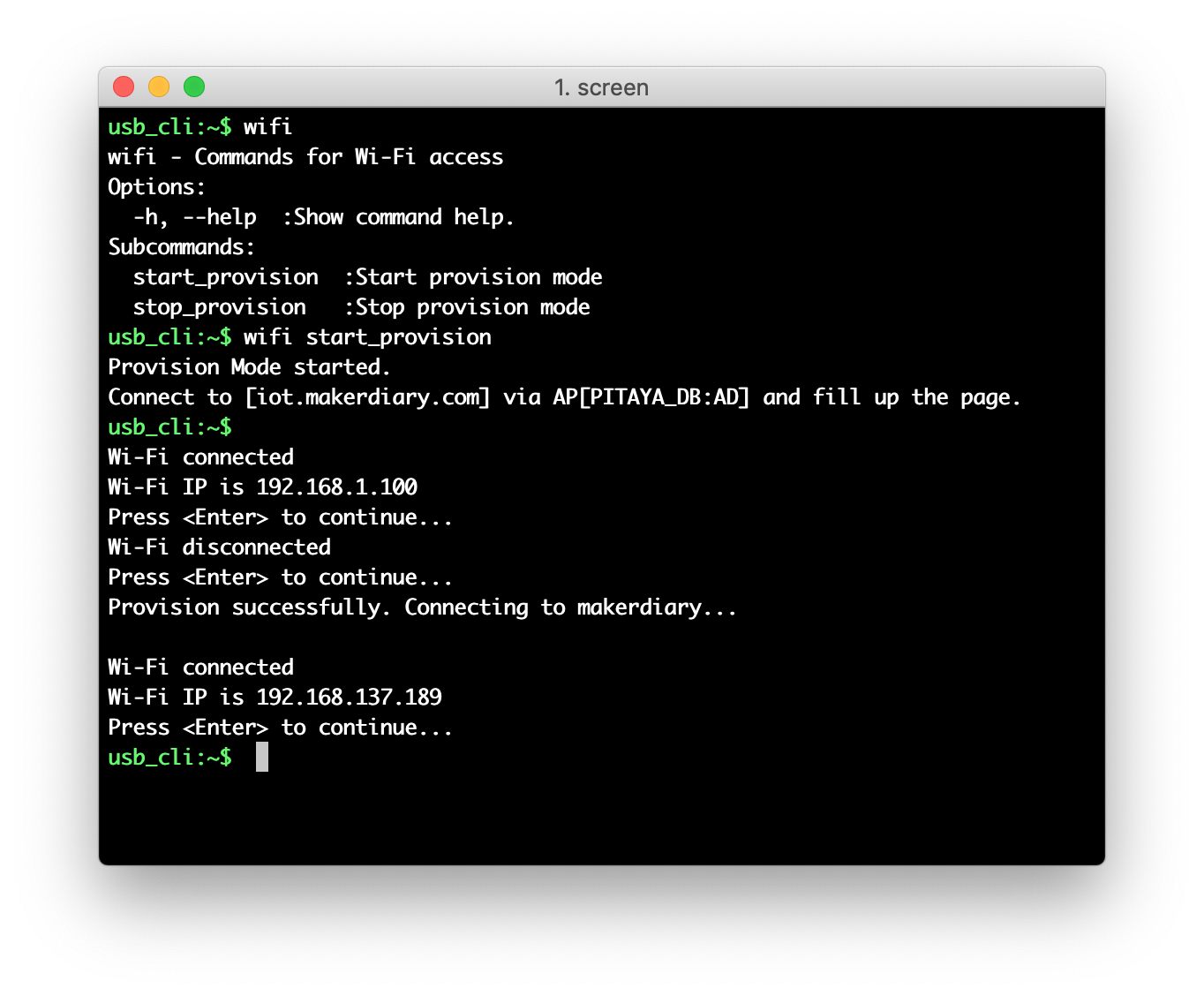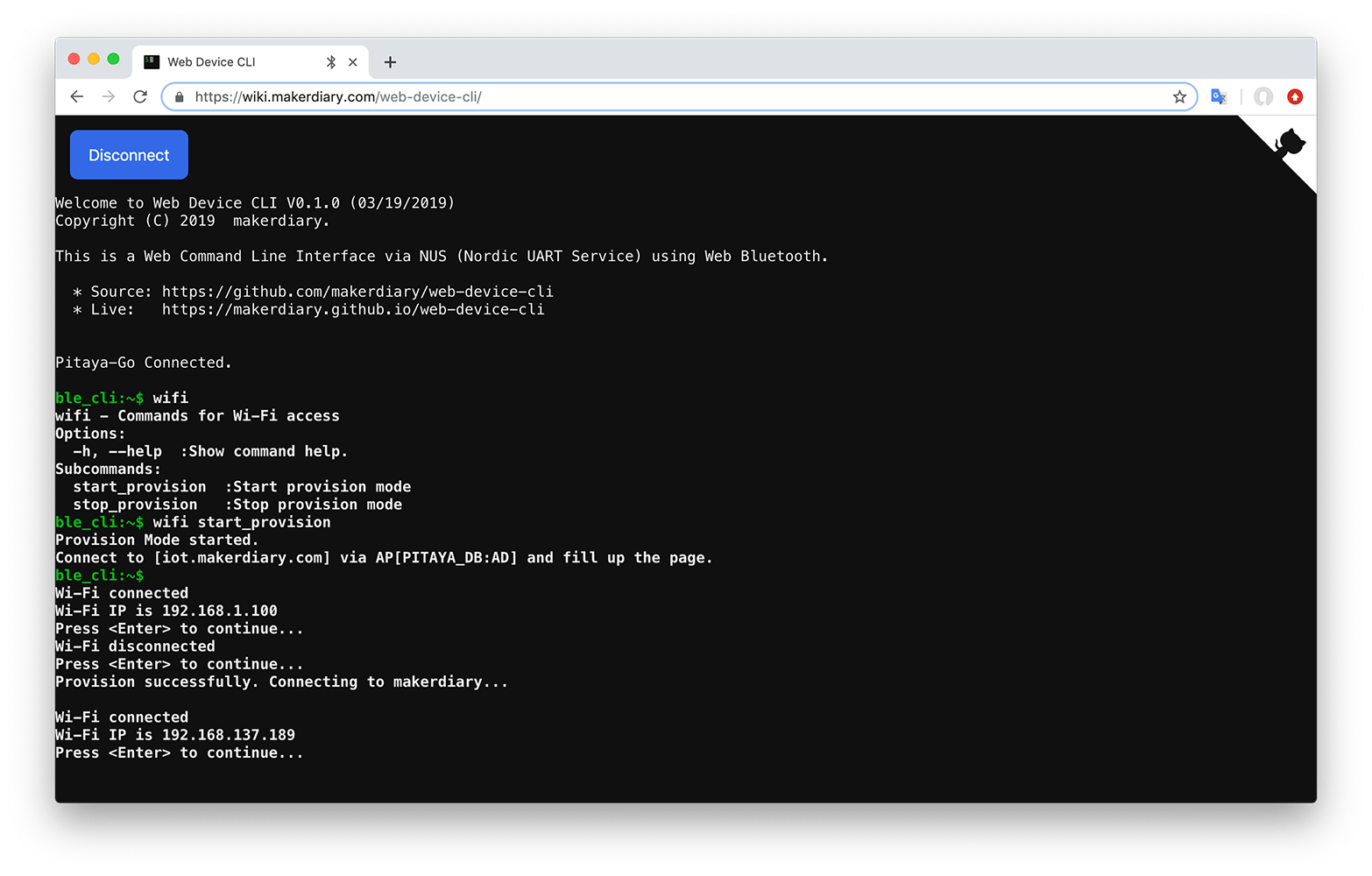How to Run HTTP Provision Mode¶
Description¶
This example demonstrates the use of the Wi-Fi module with the Pitaya Go board to start the HTTP Provision Mode.
This example also implements the Command Line Interface over BLE NUS and USB CDC ACM. Both consoles can be opened and used independently.
Tip
Before you start building, remember to set up the nRF5 SDK development environment first. See Setup the nRF5 SDK for details.
Building the example¶
You can find the source code and the project file of the example in the following folder: pitaya-go/examples/wifi/provision_http_example.
Open terminal and navigate to the directory with the example Makefile:
cd ./pitaya-go/examples/wifi/provision_http_example/armgcc
Run make to build the example:
make
Programming the firmware¶
If compiled successfully, the firmware is located in provision_http_example/armgcc/_build with the name nrf52840_xxaa.hex.
While pushing the USER button, press the RESET button to enter the DFU mode. Then program the firmware using the nRF Connect for Desktop tool.
If the SoftDevice is not programmed before, remember to add the SoftDevice. The SoftDevice is located in <nRF5 SDK>/components/softdevice/s140/hex/s140_nrf52_6.1.0_softdevice.hex.
Tip
See Programming section for details about how to program your Pitaya Go.
Testing¶
The application is now programmed and running. Perform the following steps to start the HTTP Provision Mode:
-
Run a terminal application like PuTTY or screen:
screen /dev/cu.usbmodemD2E39D222D781 115200 -
Press Enter in the terminal. A console prompt is displayed.
-
Use command
wifito print the command help information. -
Use command
wifi start_provisionto start the HTTP Provision Mode. Observe that the following information will display on the terminal window.Provision Mode started. Connect to [iot.makerdiary.com] via AP[PITAYA_XX:XX] and fill up the page.
-
Use a mobile device to scan the network and join
PITAYA_XX:XX. -
Observe that BLUE LED is lit and the Wi-Fi IP will display, that is, the device is connected.
-
Populate the setup page, and then press Connect.

-
Pitaya Go will be connected to the AP that you configured.

-
You can also use the Web Device CLI application to test this example.
Create an Issue¶
Interested in contributing to this project? Want to report a bug? Feel free to click here:
